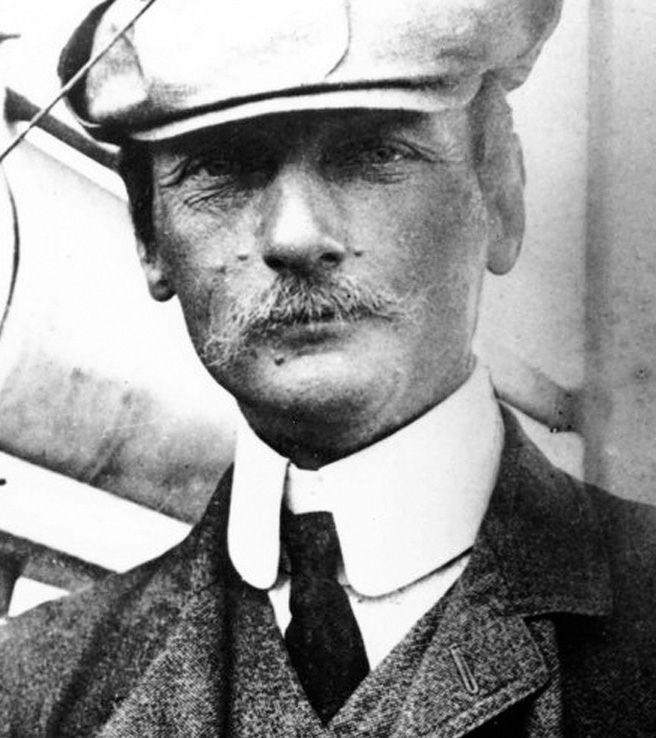Hoping this list of pre-Wright brothers attempts at flight is not too off topic.
A German-born teacher by the name of Jacob Friedrich Brodbeck allegedly made a brief uncontrolled flight in a spring-powered ornithopter in Texas in September 1865 – or in 1868.
Félix du Temple de la Croix, an officer in the French navy, allegedly completed the 1st successful flight in a motorized airplane, a steam-powered machine, albeit a brief and uncontrolled flight starting from the top of a hill, in 1874.
An English justice of the peace, Edward Purkis Frost, completed a steam-powered ornithopter in 1877 but was unable to take off.
Daniel Marion Asbury, a plantation owner, physician, inventor and amateur geologist living in North Carolina, completed a steam-powered ornithopter in 1881 but died, in 1882, before it could be tested.
A rear-admiral in the Russian navy, Aleksandr Fyodorovich Mozhaiski (spelling?), supervised some sort of test of his steam-powered airplane off a ramp near St. Petersburg between 1882 and 1886 but this proved unsuccessful.
in October 1890, Clément Agnès Ader’s steam-powered Éole allegedly made a brief and uncontrolled hop - allegedly the first unassisted take off of a powered and piloted heavier than air flying machine. A second steam-powered bat-winged aircraft, the Avion III, failed to lift off in October 1897.
A retired major with the Royal Engineers of the British Army, Ross Franklin Moore, tested a tethered ornithopter fitted with an electric motor linked by cables to a couple of high voltage power lines in 1892 but was unable to take off.
Famous German aviation pioneer Karl Wilhelm Otto Lilienthal completed an ornithopter in Berlin in 1894 but trials without its carbon dioxide engine proved unsuccessful. A second powered airplane was ready for testing when Lilienthal died as a result of a glider crash, in August 1896.
The steam-powered airplane designed by famous American inventor Hiram Stevens Maxim, the largest of its day, briefly lifted off its track in July (?) 1894.
In 1895, on a beach in Bombay, India, Shivkar Bapuji Talpade, allegedly tested an airplane powered by an ion engine, i.e. one that ejects ionized particles rather than hot gases.
An American by the name of Augustus Moore Herring allegedly made a brief uncontrolled hop over the shores of Lake Michigan, in October 1898, in an aircraft powered by a compressed air engine.
A lecturer at the University of Glasgow, Percy Sinclair Pilcher, completed an aircraft but died in a glider crash, in October 1899, before he could test it.
A telegraph operator / switch operator / dispatcher living in Texas, William Browning Custead, completed an ornithopter powered by a piston engine in 1899 and allegedly lifted off more or less vertically for brief periods of time in 1899 and / or 1900.
An Englishman by the name of Reginald Mansfield Balston completed an ornithopter no later than 1900 but never flew.
Around 1900, James W. Clark, an inventor, clock maker and bicycle repairman living in Pennsylvania completed an ornithopter powered by a piston engine but could not take off, even when he reengined it, in 1907. This ornithopter, now restored and mostly uncovered, can be admired at the Owl’s Head Transportation Museum, in Owl’s Head, Maine. It may well be the oldest surviving piloted ornithopter in the world.
Gustav Albin Whitehead, or Weisskopf, allegedly took off in a steam-powered aircraft in April or May 1899. It has also been suggested that he covered a distance of half a mile in August 1901, near Bridgeport, Connecticut. Others claim that Whitehead covered distances of 2 and 7 miles in January 1902.
Wilhelm Kress, an Austrian piano-maker who later became an engineer, tested a floatplane in October 1901 but barely escaped when it capsized and sank during trials.
Lyman Wiswell Gilmore claimed that, in May 1902, in California, he successfully tested a steam-powered airplane.
According to some people interviewed decades later, in 1902, Louis Gagnon, a railway engineer working at a gold mine in Rossland, British Columbia, Canada, tested a steam-powered flying machine that looked like a winged helicopter equipped with a propeller, the flying steamshovel, and briefly lifted off the ground.
Burrell Cannon, a Baptist minister from Pittsburg, completed a gasoline-powered aircraft, the Ezechiel airship, in 1902, and allegedly made a brief uncontrolled flight in 1902.
In 1902, William Luther Paul, a handyman from North Carolina, built a twin-rotor helicopter, the Bumble Bee, that may perhaps have lifted off for a few seconds.
It has been alleged that New Zealand Richard William Pearse flew ore than once between March and July 1903, something that he himself did not claim.
A captain in the French army, Ferdinand Ferber, mounted a small engine on the 5th glider he had designed and tested it, in June 1903, near Nice, using a rotating arm mounted in a tower; the underpowered machine did not perform well.
In August and November 1903, a city inspector, Karl Jatho, made short uncontrolled hops in Hanove, Germany.
A French electrical engineer, Léon Levavasseur, supervised the testing of an aircraft in September 1903 but the machine crashed after flying a short distance without any control.
The secretary of the Smithsonian Institution, astronomer and physicist Samuel Pierpont Langley, supervised two unsuccessful attempts using his Aerodrome, in October and December 1903.

